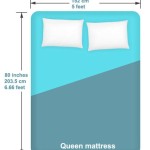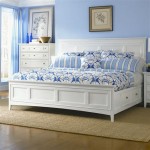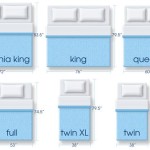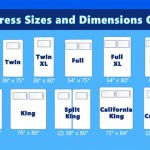Gothic Full Size Bed Frames: A Comprehensive Guide
Gothic full size bed frames represent a distinctive style of furniture that draws inspiration from the Gothic architectural period, noted for its grandeur, ornate detailing, and dramatic aesthetic. This style, prevalent during the Middle Ages, has found its way into interior design, offering a unique alternative to more contemporary or minimalist bed frame options. When considering a Gothic full size bed frame, several factors warrant careful evaluation, regarding materials, design elements, functionality, and suitability within a specific interior space. This article provides a comprehensive guide to understanding and selecting a Gothic full size bed frame.
Understanding the Gothic Aesthetic
The Gothic aesthetic is characterized by several key elements, all of which can be incorporated into the design of a bed frame. These elements typically include pointed arches, elaborate tracery, dark finishes, and intricate carvings. In furniture, this translates to bed frames featuring strong vertical lines, decorative metalwork, and a sense of substantiality. A genuine Gothic bed frame seeks to evoke a feeling of historical significance and imposing presence, rather than simply adhering to a modern design trend.
Materials commonly used in Gothic bed frames often include wrought iron, dark-stained woods such as oak or walnut, and occasionally, elements of stone or simulated stone. The use of these materials enhances the perceived weight and durability of the piece, contributing to the overall Gothic feel. Ornamentation typically involves floral or geometric patterns, often rendered in relief carvings or metal overlays. Symbolism, such as religious or heraldic imagery, may also be incorporated into the design, though this is less common in contemporary adaptations.
The color palette associated with Gothic interiors generally leans towards dark, rich tones. Deep reds, greens, and blues are often paired with black or dark brown to create a dramatic contrast. Gilding, or the application of gold leaf, may be used sparingly to highlight specific details and add a touch of opulence. In the context of a bed frame, these colors can be achieved through the choice of materials, finishes, or the addition of decorative elements such as upholstery or tapestries.
It is crucial to differentiate a true Gothic-style bed frame from those that merely incorporate a few Gothic-inspired features. A genuine Gothic bed frame strives for authenticity in its design, materials, and construction, whereas a more modern interpretation may selectively borrow certain elements while retaining a more contemporary overall aesthetic. The level of detail and the commitment to historical accuracy are key indicators of the authenticity of a Gothic bed frame.
Furthermore, the Gothic aesthetic often evokes a sense of mystery and romanticism. The use of shadows and dramatic lighting can enhance this effect, creating a bedroom that feels both imposing and intimate. The bed frame, as the focal point of the room, plays a crucial role in establishing this atmosphere. Therefore, selecting a bed frame that accurately reflects the desired Gothic aesthetic is essential for achieving the desired overall effect.
Key Considerations When Choosing a Gothic Full Size Bed Frame
Selection of a Gothic full size bed frame requires careful considerations, extending beyond aesthetic appeal to encompass practical factors such as size, construction, and compatibility with the existing room décor. Due diligence in these areas ensures a satisfying purchase that aligns with individual needs and preferences.
The size of the bed frame is a primary consideration. A full size bed frame, also known as a double bed frame, is typically 54 inches wide and 75 inches long. This size is suitable for single sleepers or couples who prefer a smaller sleeping space. It is imperative to measure the available space in the bedroom to ensure that the bed frame will fit comfortably, leaving adequate room for movement around the bed. Consider the dimensions of the headboard and footboard, as these can significantly increase the overall footprint of the bed frame. In smaller rooms, a full size bed frame with a minimal headboard and footboard may be preferable to a more elaborate and space-consuming design.
Construction quality is another critical factor. A well-constructed bed frame will be made from durable materials and will be able to withstand regular use without creaking, wobbling, or breaking. Look for bed frames made from solid wood or heavy-gauge metal. Ensure that the joints are securely fastened and that the finish is applied evenly and is resistant to scratches and chipping. The weight capacity of the bed frame should also be considered, especially for heavier individuals or couples. A sturdy bed frame will provide a stable and comfortable sleeping surface for years to come, while a poorly constructed frame may require frequent repairs or replacement.
Compatibility with existing room décor is essential for creating a cohesive and harmonious interior space. The Gothic aesthetic is characterized by its bold and dramatic nature, and it may not be suitable for all décor styles. Consider the color scheme, furniture style, and overall ambiance of the room before selecting a Gothic bed frame. If the room is already decorated in a Gothic or Victorian style, a Gothic bed frame will likely fit seamlessly into the existing décor. However, if the room is decorated in a more modern or minimalist style, a Gothic bed frame may clash with the existing décor. In such cases, consider incorporating Gothic elements subtly, such as through the choice of bedding or accessories, to create a more balanced and harmonious look. The bed frame should complement the overall design of the room, rather than dominating it.
Furthermore, consider the height of the bed frame. The height of the bed frame will determine the overall height of the bed, which can affect comfort and accessibility. A taller bed frame may be easier to get in and out of, especially for individuals with mobility issues. A shorter bed frame may be more aesthetically pleasing in smaller rooms or for those who prefer a lower profile bed. The height of the bed frame should be chosen based on individual needs and preferences, as well as the overall design of the room. The type of mattress used will also influence the overall height of the bed; therefore, mattresses should be factored.
Material Choices and Their Implications
The materials used in the construction of a Gothic full size bed frame influence not only its aesthetic appearance but also its durability, maintenance requirements, and overall cost. Common materials include wood, metal, and upholstered elements, each possessing unique characteristics that contribute to the overall suitability of the bed frame.
Wood is a popular choice for Gothic bed frames, offering a timeless and traditional aesthetic. Dark-stained hardwoods, such as oak, walnut, and mahogany, are particularly well-suited to the Gothic style, providing a rich and luxurious look. Wooden bed frames can be intricately carved, allowing for the incorporation of Gothic motifs such as pointed arches, tracery, and floral patterns. The durability of a wooden bed frame depends on the type of wood used and the quality of the construction. Hardwoods are generally more durable than softwoods, and a well-constructed wooden bed frame can last for decades. However, wooden bed frames can be susceptible to moisture damage and require regular maintenance, such as polishing and dusting, to keep them in good condition. The cost of a wooden bed frame can vary widely, depending on the type of wood used and the complexity of the design.
Metal, particularly wrought iron, is another commonly used material in Gothic bed frames. Wrought iron bed frames offer a strong and durable alternative to wooden bed frames, with a distinctive industrial aesthetic. Metal bed frames can be shaped into intricate designs, allowing for the creation of elaborate headboards and footboards. Wrought iron is also relatively low-maintenance, requiring only occasional cleaning to remove dust and dirt. Metal bed frames are generally less susceptible to moisture damage and insect infestation than wooden bed frames. The cost of a metal bed frame can vary depending on the type of metal used and the complexity of the design. Wrought iron bed frames are often more expensive than bed frames made from other metals, such as steel or aluminum.
Upholstered elements, such as fabric or leather panels, can be incorporated into Gothic bed frames to add comfort and visual interest. Upholstered headboards and footboards can soften the hard lines of the wood or metal frame, creating a more inviting and comfortable sleeping space. The choice of fabric or leather can also influence the overall aesthetic of the bed frame, allowing for the incorporation of rich colors and textures. Upholstered bed frames require regular maintenance to keep them clean and free from stains. The cost of an upholstered bed frame can vary depending on the type of fabric or leather used and the complexity of the design. High-quality fabrics and leathers will generally be more durable and resistant to wear and tear.
The choice of materials should be carefully considered based on individual needs and preferences, as well as the overall design of the room. A well-chosen material will enhance the aesthetic appeal, durability, and comfort of the Gothic full size bed frame, ensuring a satisfying and long-lasting purchase. Compatibility with existing furniture needs to be considered along with the level of potential maintenance needs when choosing a particular material.

Old World Heavily Carved Gothic Black Canopy Bed Queen

Gothic Bed

French Heavy Gothic Victorian Canopy Bed
.png?strip=all)
Mahogany Gothic Style Empire Bed Frame

Gothic Inspired Bed With Wood And Leather Accents

Gothic Cathedral Canopy Bed Velvet Headboard Custom

Gothic Beds

Gothic Inspired Bed With Wood And Leather Accents

Empire Gothic Bed

Gothic Cathedral Canopy Bed Velvet Headboard Custom








